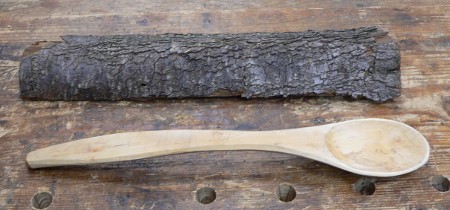
This past Saturday, The Ploughshare’s Woodworking School had a one-day spoon making class, attended by seven students. They each made a stirrer, a spoon, a spatula, and a ladle from kiln-dried woods (cherry, pine, walnut and mesquite) using simple hand tools. Everyone completed or nearly completed their projects in the class. The main thing left to do was sanding and adding a mineral oil finish.
As part of the class, Frank Strazza, the instructor, demonstrated how to make a spoon from a log. He started with a pear tree log about 5 inches in diameter that had just been cut a few days prior. Using a froe, a hatchet, a drawknife and several other simple hand tools, he made a large Swiss-style wooden spoon. Below are some photos, showing how he did it.
First he split the log in half with a froe and mallet.
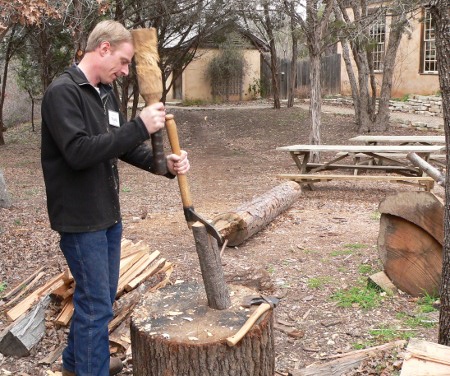
Next he shaped the face with a hatchet, then carved the bowl.
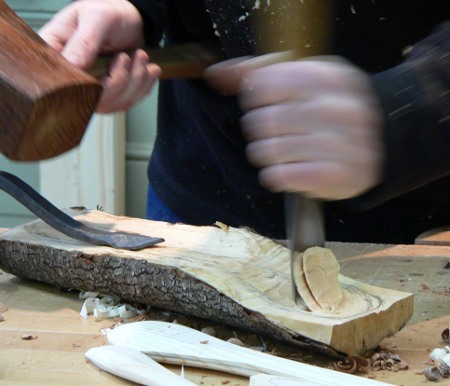
Once the bowl had been shaped, Frank made several stop cuts (visible several inches from the bottom end of the log) using a hand saw, then removed the bulk of the waste material using a hatchet. He used a sweeping circular motion to make somewhat of a slicing cut.
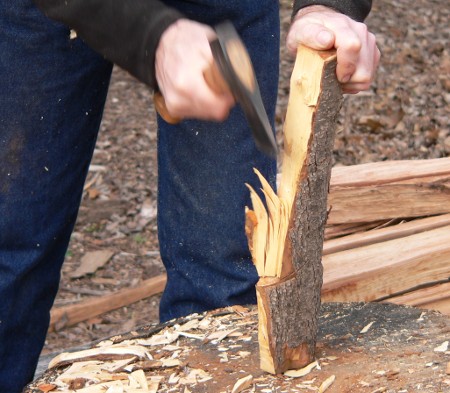
Frank brought the work-in-progress back into the shop and continued shaping it with a drawknife. He used a shavehorse to hold the spoon. It’s basically a foot operated vice that grips the spoon firmly but lets you reposition it quickly and leaves your hands free for working.
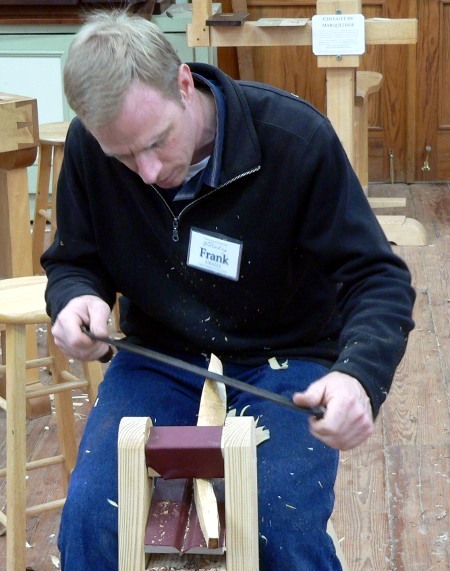
For finer shaping, Frank used a spokeshave.
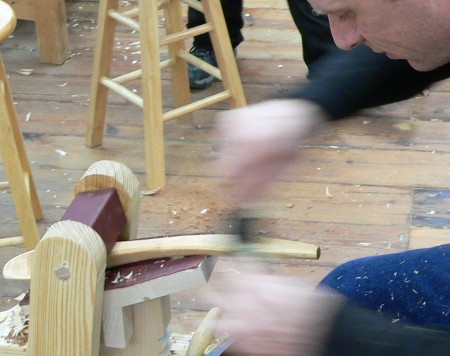
Below is the nearly completed pear spoon, along with a few other spoons made from firewood-sized logs. From top to bottom, the woods are black walnut, hackberry, peach, and pear. All that’s left to do on the pear spoon is wait a few days until it dries, scrape it with a card scraper, sand it, and apply some mineral oil to protect the wood and bring out its natural beauty.
It’s amazing to see what you can make from a rough log.
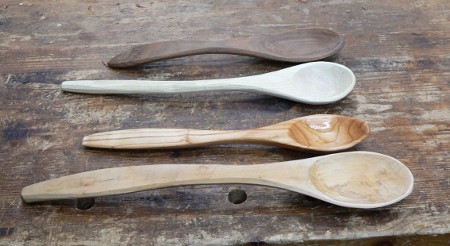
My son also attended the spoon-making class. Below is a photo of the spoons he made during the class, after he’s sanded and oiled them. He was pretty excited about the class. Although he’s been making spoons for a few years, he felt like what he learned in the class is really going to revolutionize the way he makes spoons.

Spoon making is relaxing and enjoyable, but it’s also a great way to strengthen your skills as a woodworker — particularly your ability to shape wood and learn to work with, rather than against, the grain.

I love to use and eat with my wood spoons. I have always wanted to make my own spoons,
yet I did not know of any instruction. You have convinced me to seek your guidance.
I have been instructed by Frank in two different years, and it has made a permanent change in my woodworking life. Thanks for offering such gifted classes.
Thank you for your comments Jack. There is something therapeutic about carving spoons. I look forward to seeing in the next spoon class!
When is the next class?
Carrie, we have scheduled a spoon-making class for June 1, 2012. Here is the link to the page on our website where you can register:
Wooden Spoon Making Class
Will you hold another wood spoon class? If so when?
Judy,
We will have another spoon making class on June 1, 2012. If you would like to register, you can click the following link:
Spoon Making Class
—
Matthew